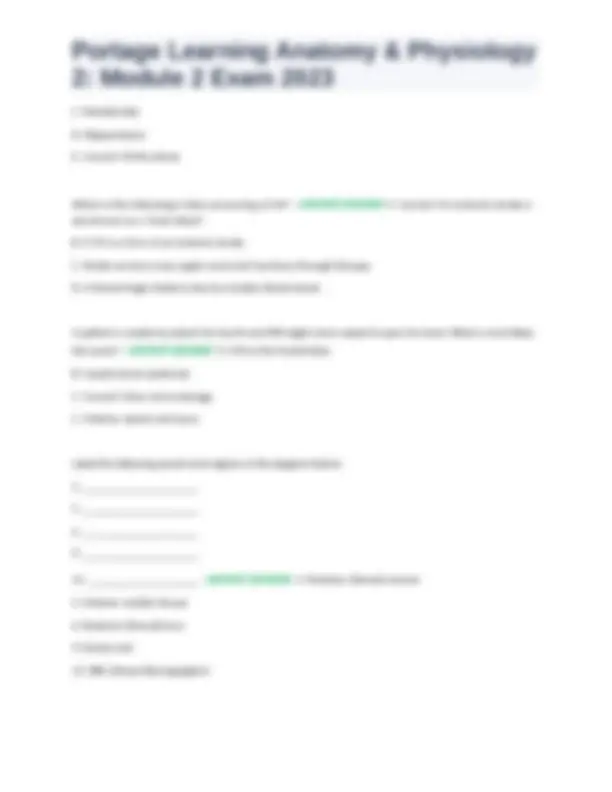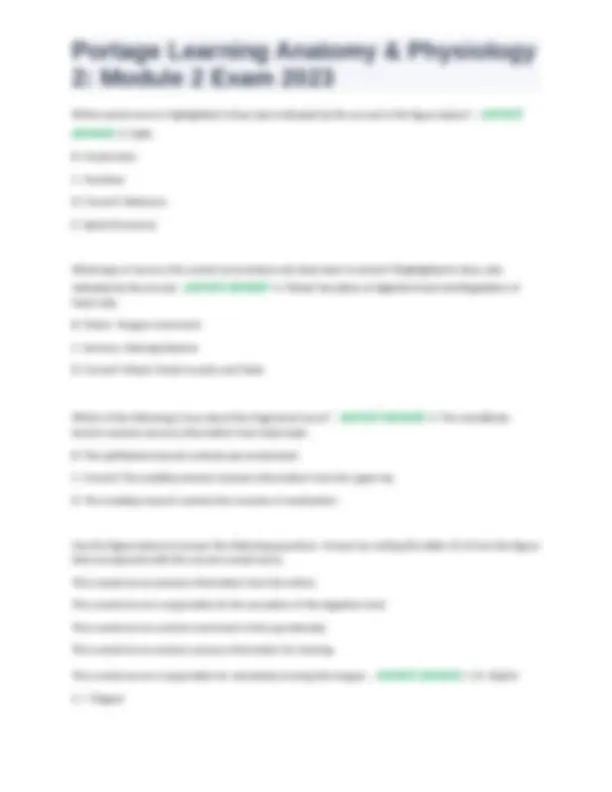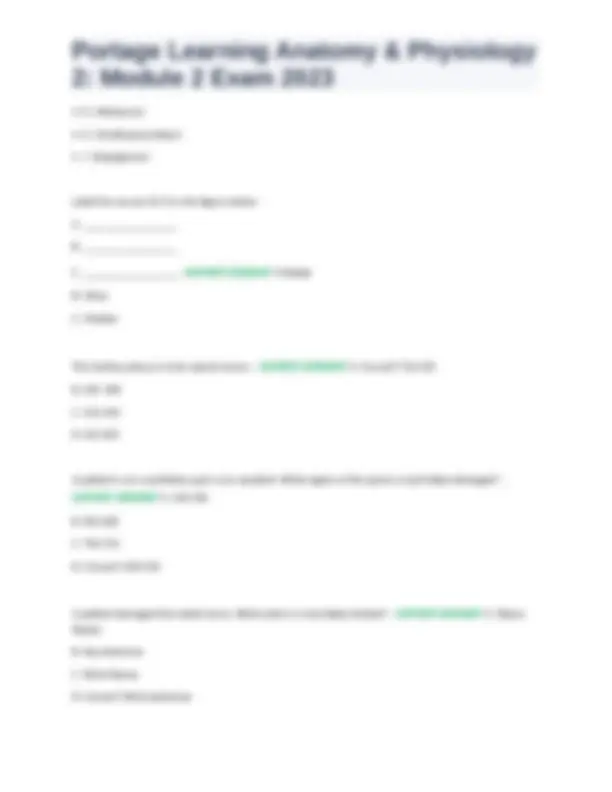





Study with the several resources on Docsity

Earn points by helping other students or get them with a premium plan


Prepare for your exams
Study with the several resources on Docsity

Earn points to download
Earn points by helping other students or get them with a premium plan
Community
Ask the community for help and clear up your study doubts
Discover the best universities in your country according to Docsity users
Free resources
Download our free guides on studying techniques, anxiety management strategies, and thesis advice from Docsity tutors
A series of questions and answers related to the anatomy and physiology of the brain and nervous system. It covers topics such as the meninges, cerebral hemispheres, blood-brain barrier, hypothalamus, cerebellum, brainstem, nerves, and parasympathetic nervous system. It also includes questions related to specific brain regions and their functions, as well as the impact of injuries and diseases on the nervous system. a comprehensive overview of the anatomy and physiology of the brain and nervous system, making it a useful study resource for students in related fields.
Typology: Exams
1 / 7

This page cannot be seen from the preview
Don't miss anything!




longitudinal What is the purpose of the blood-brain barrier? Describe its maintenance from a cellular level. -
entering the central nervous system tissue, keeping the brain and spinal cord separate from general blood circulation. The blood-brain barrier is formed by the relatively impermeable brain capillaries, due to the glial cells astrocytes. Maintenance of the blood-brain-barrier is important to provide a stable chemical environment for the nervous system..
homeostasis B. Controls the pituitary gland C. Links the nervous and endocrine systems D. Correct! Relays sensory impulses to the cerebrum
B. Correct! Cerebrum C. Corpus collosum D. Cingulate gyrus
A. Primary sensory cortex B. Primary motor cortex C. Correct! Association area D. Precentral gyrus E. Postcentral gyrus
A patient is having difficulty understanding language but is still able to speak fluently. The patient's
area B. Correct! Wernicke's area C. Occipital lobe D. Parietal lobe E. Primary sensory cortex
throughout the cerebral hemispheres. The hippocampus acts as a memory center to help with memory storage and retrieval. The involvement of the limbic system explains why emotionally charged events result in our most vivid memories.
portion of the brainstem is continuous with the spinal cord. B. The pons helps to regulate breathing. C. The midbrain contains the superior and inferior colliculi. D. The medulla contains reflex centers to regulate vasoconstriction.
external while the white mater is internal. B. Correct! The cerebellar peduncles are located posteriorly. C. The anterior lobe receives information from the body trunk. D. The vermis coordinates arm movements.
B. Frontal lobe
B. Oculomotor C. Trochlear D. Correct! Abducens E. Spinal Accessory What type of nerve is the cranial nerve below and what does it control? (Highlighted in blue, also
heart rate B. Motor: Tongue movement C. Sensory: Hearing/balance D. Correct! Mixed: Facial muscles and Taste
branch receives sensory information from taste buds. B. The ophthalmic branch controls eye movements. C. Correct! The maxillary branch receives information from the upper lip. D. The maxillary branch controls the muscles of mastication. Use the figure below to answer the following questions. Answer by writing the letter (A-J) from the figure that corresponds with the correct cranial nerve. This cranial nerve receives information from the retina. This cranial nerve is responsible for the sensation of the digestive tract. This cranial nerve controls movement of the eye laterally. This cranial nerve receives sensory information for hearing.
B- Ulnar C- Median
A patient is on a ventilator post a car accident. What region of the spine is most likely damaged? -
D. Correct! C03-C
flexion B. Hip extension C. Wrist flexion D. Correct! Wrist extension
A patient comes into the ER following an accident. She is scared and starting to hyperventilate. You talk with her in a calm, reassuring manner as she receives medical care. You are trying to increase the activity
increase the activity of the parasympathetic nervous system as it is also sometimes called the "housekeeper system" because it promotes all the internal responses we associate with a relaxed state. The parasympathetic system also acts to slow the heart rate. If someone sustains an injury to the area of the spinal cord, as shown below by the blue oval, would you
would be more likely to see decreased sensation because sensory neurons enter the spinal cord posteriorly. One of your patients sustained a hemorrhagic CVA. You notice they have rigid movements when moving their arms. They also have difficulty forming a plan to move their body. What area of the brain is most
executing a motor plan and to slow and control fine movements (creating the rigid movements). Apraxia, or impaired motor planning. Apraxia results in rigid movements and difficulty executing a motor plan.